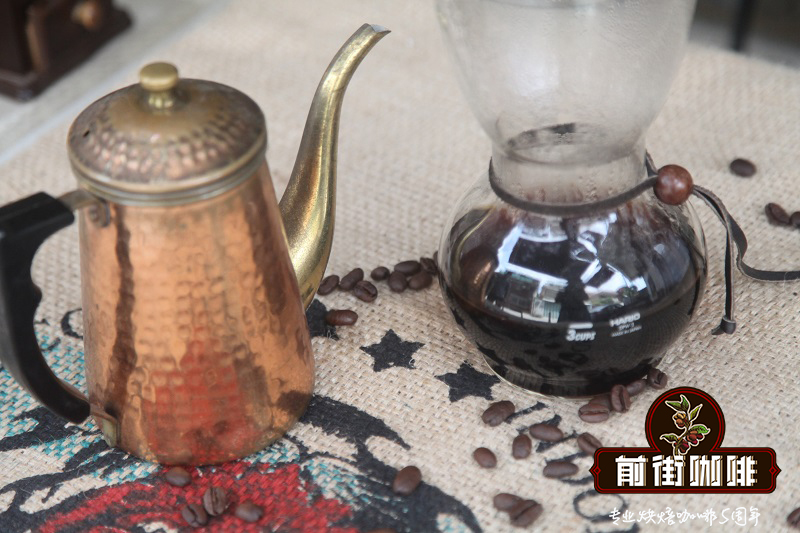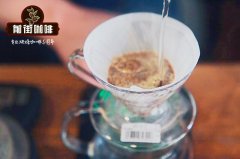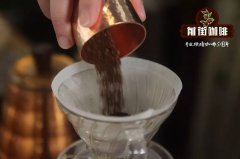How to bake Sidamo coffee beans? The roasting of Sidamo coffee beans suggests the price of Sidamo coffee beans.

Professional coffee knowledge exchange more coffee bean information please follow the coffee workshop (Wechat official account cafe_style)
Brief introduction of Coffee Bean producing area in Sidamo
Sidamo producing area
Sidamo coffee beans are very diverse in flavor. Different soil types, microclimates and countless native coffee species, towering mountains, highlands, plateaus, valleys and plains, diverse topography, and the geology of the area belongs to nutrient-rich, well-drained volcanic soil. the depth of the soil is nearly two meters, and the surface soil is dark brown or brown. Sidamo, which grows in the southernmost Ethiopian plateau between 4600 and 7200 feet above sea level (Sidamo province), is a famous boutique coffee area in southern Ethiopia, bordering Kenya, southeast of Gemma, just south of the capital, usually sweet and loved by most people. its annual output is about 225000 bags / 60kg. Sidamo coffee beans are very diverse in flavor, different soil types, microclimate and countless native coffee species. The towering mountains, highlands, plateaus, valleys and plains in the region are diverse in topography, and the geology of the area is a fertile, well-drained volcanic soil with a depth of nearly two meters and a dark brown or brown topsoil. The biggest advantage of the area is that the soil fertility is maintained through the circulation of organic matter, using the withered leaves of the surrounding trees or the residual roots of the plants as fertilizer. Therefore, there are obvious differences and characteristics in the coffee produced in cities and towns.
In 2010-2012, it continuously obtained the high score of CR92~94, the authoritative coffee evaluation website in the United States. Thus it can be seen that the raw beans in this area are extraordinary.
Introduction of Guji producing area
Guji producing area is located in the southeast of Yejia Xuefei, a well-known producing area.
The raw coffee beans belonging to Oromia Region → Guji Zone belong to the regional type in the division of administrative regions. Just as Yejia Xuefei became well-known after its fame, it became an independent secondary production area of Sidamo (Guji Zone). This batch is made near the town of Dara Woreda in Sidama province. Produced by small coffee farmers in the Sirsa Cooperative (Shilcho Coop). This cooperative was founded in 1976 and is currently a member of SCFCU (Sidama Coffee FarmerCooperative Union), the cooperative federation of Sidama province. SCFCU is a large federation of coffee cooperatives in Ethiopia, which currently has about 46 member cooperatives and is the second largest coffee in Ethiopia.
02? treatment method
Sun drying is the oldest and most primitive treatment of coffee beans. Compared with water washing, this drying method of coffee is also known as "natural coffee" or "sun coffee". The harvested coffee fruit is directly exposed to the sun for about two to four weeks. This method is generally used in countries with a clear dry and wet climate.
1. First of all, harvest ripe coffee fruit.
two。 Preliminary selection of impurities and inferior beans
3. Select floating beans: pour the coffee fruit into the sink, the ripe and full fruit will sink to the bottom of the sink, and the immature or incomplete fruit will surface.
4. The sun-drying method removes the ripe coffee fruit that sank at the bottom of the sink and spreads it in the sun-drying field to reduce the moisture content from 70% to about 10-12%. Turn the fruit several times a day to dry evenly, and cover it at night to avoid moisture.
5. Remove the shell: after about two to four weeks of exposure, the outer layer of the coffee seed has been dry and hard, and then use a sheller to remove the shell.
03? raw bean analysis
[Sidamo Coffee beans-Lion King Sun treatment]
Ethiopia's coffee varieties have been recorded in nearly 2000 varieties. Ethiopia's coffee varieties have everything in the 'Grand View Garden'. The long, short, thin and fat coffee varieties are difficult to identify, so they are called local native species. There are also small seeds of dwarf plants in bean grains, with strong disease resistance and poor disease resistance; tall and strong, with medium tree shape.
04? baking analysis
This Sidamo coffee bean has a small body, yellowish green, poor evenness and low moisture content. The goal of baking is shallow and medium baking, which retains bright acidity on the one hand and shows multi-layered aromas of tropical fruits on the other.
In the first batch of baking, the lower bean temperature is relatively high, the bean temperature is 200 degrees, and the firepower is also relatively high. In the process of baking, it was found that the elevation of the bean was extremely high and the quality of the bean was very hard. in order to avoid uneven baking caused by the uneven size of raw bean particles, the baking technique of lengthening dehydration, gradually lowering fire and climbing steadily was adopted. adjust the firepower when the beans enter the yellowing point, the dehydration is finished and the precursors of an explosion are adjusted to avoid burns on the bean surface, and choose to come out of the oven before the end of an explosion to shorten the time of caramelization reaction. Retain the cleanliness of the flavor and the aroma of flowers and fruits.
Yangjia 600g semi-straight fire
Enter the pot at 200 degrees Celsius, adjust the firepower to 160 degrees after opening the throttle for 30 seconds, keep the throttle unchanged, the temperature return point is 1 "35, keep the firepower, at 4: 50 the bean surface turns yellow, the smell of grass disappears completely, enter the dehydration stage, the firepower is reduced to 120 degrees, and the throttle is adjusted to 4.
This Sidamo Coffee beans Lion King Sun is close to the floral aroma, with obvious fruit flavors; smooth, balanced, lively and changeable layers.
Analysis of Coffee Bean brewing in Sidamo
Recommended cooking method; hand flushing.
Degree of grinding; (Japanese little Fuji R440) 3.5
V60 filter cup, 15g powder, water temperature 90 degrees
Degree of grinding 3.5
The ratio of gouache to flour is 1: 15
Break off; water injection to 125 grams, slow water injection to 225 grams
The total length is 2 minutes and 03 seconds.
The water temperature of BG grinding 4HPM is 90 degrees.
Bean grinder
Grinding degree
Powder quantity
Filter cup
BG
4J
15g
V60
Water temperature
Stuffy steam
The second stage of water quantity
The third stage of water quantity
Total time 2:02
90 degrees
38g water 37s
70g
125g
Total water volume: 225g
Sweetness: ☆☆
Acidity: ☆
Bitterness: ☆
Other suggestions on trickling extraction
French kettle; recommended grinding degree of 3.5 to 4, water temperature 91 degrees
Sidama Coffee Bean Brand recommendation
The Sidamo Sakuran coffee beans baked in Qianjie Coffee are fully guaranteed in terms of brand and quality. And more importantly, the performance-to-price ratio is extremely high, a pack of 227 grams, the price is only 98 yuan. According to the calculation of 15 grams of powder per cup of coffee, a bag of coffee can make 15 cups of coffee, which costs only about 6 yuan per cup, which is recommended by conscience compared to the price sold in cafes for dozens of yuan a cup.
Important Notice :
前街咖啡 FrontStreet Coffee has moved to new addredd:
FrontStreet Coffee Address: 315,Donghua East Road,GuangZhou
Tel:020 38364473
- Prev

How do you drink Sidamo coffee beans? Introduction to the characteristics and flavor of Sidamo coffee price list of Sidamo coffee
Professional coffee knowledge exchange more coffee bean information please follow the coffee workshop (Wechat official account cafe_style) A cup of delicious Sidamo coffee beans is nothing more than sweet and sour balance and smooth taste and other features, the design of the filter cup is how to show these characteristics of coffee. However, the style of coffee brewed by different filter cups is also different. Three kinds of examples
- Next

How do you wash Sidamo by hand? The flavor characteristics of washing Sidamo how much is it to wash Sidamo?
Professional coffee knowledge exchange more coffee bean information Please pay attention to Coffee Factory (Wechat official account cafe_style) [Sidamo sidamo] Coffee bean flavor is very diverse, because different soil composition, regional microclimate and countless native coffee varieties make the coffee produced in each urban area have obvious differences and characteristics. Sidamo producing area
Related
- Detailed explanation of Jadeite planting Land in Panamanian Jadeite Manor introduction to the grading system of Jadeite competitive bidding, Red bid, Green bid and Rose Summer
- Story of Coffee planting in Brenka region of Costa Rica Stonehenge Manor anaerobic heavy honey treatment of flavor mouth
- What's on the barrel of Blue Mountain Coffee beans?
- Can American coffee also pull flowers? How to use hot American style to pull out a good-looking pattern?
- Can you make a cold extract with coffee beans? What is the right proportion for cold-extracted coffee formula?
- Indonesian PWN Gold Mandrine Coffee Origin Features Flavor How to Chong? Mandolin coffee is American.
- A brief introduction to the flavor characteristics of Brazilian yellow bourbon coffee beans
- What is the effect of different water quality on the flavor of cold-extracted coffee? What kind of water is best for brewing coffee?
- Why do you think of Rose Summer whenever you mention Panamanian coffee?
- Introduction to the characteristics of authentic blue mountain coffee bean producing areas? What is the CIB Coffee Authority in Jamaica?

